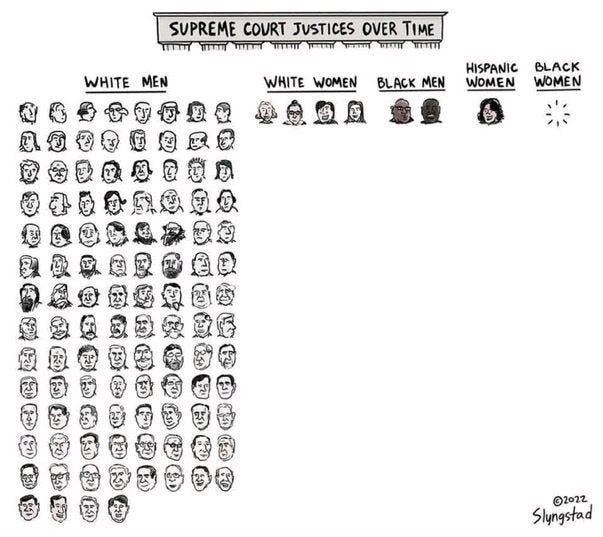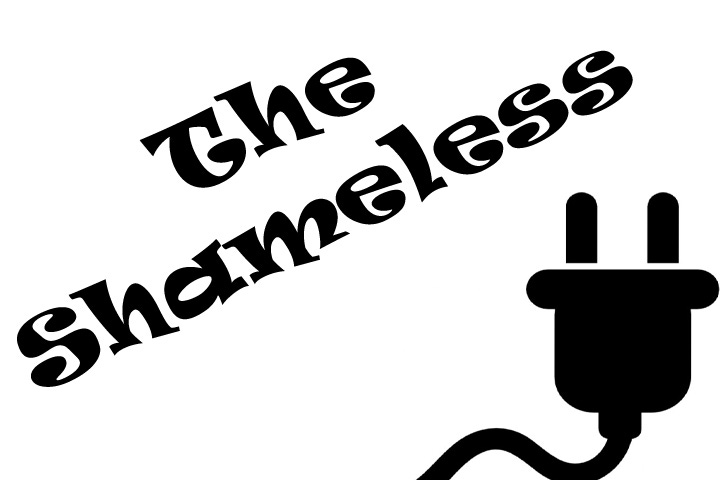
Issue #138 Government September 15, 2022
No ads or annoying popups ever! So instead, please see the important information at the bottom of this post. Please keep those “Likes” and comments coming! Thanks!
The Department of Justice (DOJ) is part of the Executive Branch of the United States Government, while the Supreme Court of the United States (SCOTUS) is part of the Judicial Branch. Both have been in the news a lot lately.
The office of the Attorney General of the United States was established in 1789 when President George Washington appointed Edmund Jennings Randolph, a former Virginia Attorney General and Virginia Governor. Randolph was appointed as Secretary of State in 1794 and served in that post until 1795. The Attorney General serves as the top prosecutor for the United States government and is (supposedly) an independent entity. The Attorney General is not intended to be the personal attorney for the president; that is the job of the White House Counsel.
The DOJ was established in 1870 to enforce the 14th and 15th Amendments and the rights of formerly enslaved African Americans. The first mission of the DOJ was to protect the voting rights of Black men (women of any race did not get the right to vote until 1920) and to arrest and prosecute the members of the violent extremist group called the Ku Klux Klan.
The Supreme Court was also established in 1789 by Article Three of the United States Constitution. Article Three also granted Congress the power to create lower federal courts.
The Judiciary Act of 1789 organized the SCOTUS with six justices with lifetime appointments. For the first 100 years of its existence, the SCOTUS was expected to hold circuit court twice a year in each judicial circuit. Because travel was so difficult in the 18th and 19th centuries, that requirement was finally abolished in 1891.
All Supreme Court justices are nominated by the president and approved by the U.S. Senate. The Chief Justice of the Supreme Court is the highest judicial official in the United States and is responsible for presiding over the Supreme Court.
The Chief Justice also presides over the Senate impeachment trials of the presidents of the United States who have been impeached by the House of Representatives and is required to be on the Board of Regents for the Smithsonian Institution.
Since 1789, the number of SCOTUS justices, by Congressional law, has changed six times from five justices to ten, with a current number of nine justices set by Congress in 1869.
Chief Justice John Marshall, the 4th Chief Justice, in the 1803 decision for Marbury v Madison, established that the Supreme Court had the power to review and rule on the constitutionality of federal laws enacted by Congress.
In the 1930s, Chief Justice Charles Evans Hughes wrote landmark opinions on the freedom of speech and freedom of the press.
Chief Justice Earl Warren headed the Supreme Court in the 1950s and 1960s and issued several landmark decisions, including Brown v Board of Education (1954) which banned school desecration, Miranda v Arizona (1966) for “the right to remain silent,” and Loving v Virginia (1967) which legalized interracial marriage. William Howard Taft was the only SCOTUS to also serve as president of the United States.
The Supreme Court also denied citizenship to enslaved African Americans in Dred Scott v Sanford (1857), upheld segregation laws in the states with Plessy v Ferguson (1896), and also upheld the constitutionality of the World War II Japanese internment camps with Korematsu v United States (1944). In 1963, the Supreme Court ruled in Gideon v Wainwright that defendants had the right to legal representation without charge.
Only rarely do cases go straight to the Supreme Court. Usually, a court case must be appealed to the appellate court first. Then the defendant has the right to ask the SCOTUS to take the case. The Supreme Court officially meets from the first Monday in October until the following June, and only a hundred or so cases are accepted on the court’s docket per term. From October through December, oral arguments are heard during the first two weeks of each month. Most SCOTUS cases are reviews of the decisions of the lower courts so there is no jury and no witnesses.
Most SCOTUS opinions are released on Tuesday and Wednesday mornings and on the 3rd Monday of each Court term.
In the 1980s, Attorney General Edwin Meese, appointed by President Ronald Reagan, vowed to “…institutionalize the Reagan revolution so it can’t be set aside no matter what happens in future presidential elections.”
Trump and the Mitch McConnell-led Senate placed a very large number of very conservative judges on the lower federal and appeals courts and, of course, appointed and voted three of the six conservative associate SCOTUS justices. Trump has called his judicial appointments “my judges.”
Today, 30% of the federal judges have been appointed by Trump, and the three Trump-appointed SCOTUS justices (Gorsuch, Kavanaugh, and Coney-Barrett) testified under oath during their Senate confirmation hearings that Roe was “settled law,” but voted to overturn the decision anyway. They lied.
Biden and the Chuck Schumer-led Senate have also placed many judges on the lower federal and appellate courts. Biden nominated, and the Senate approved (with only one Republican senator voting in the affirmative) the first Black woman to the Supreme Court. However, Justice Ketanji Brown Jackson replaced Justice Steven Breyer and so the 6-3 conservative majority of the current Supreme Court remains.
However, President Biden and his staff and appointments have been very clear that they consider the Attorney General, the DOJ, and the SCOTUS independent and not to be interfered with by him.
If the Democrats are able to overcome the historical norm of the party in power losing Congressional seats during the midterm elections and hold onto and expand both houses of Congress, they have the ability to expand the number of associate justices on the Supreme Court and add even more judges to the lower courts.
The Democrats are seeking to codify Roe and establish marriage equality (same-sex and interracial marriage) as the laws of the land. It will take a majority of both houses (and especially in the Senate) and a liberal majority on the Supreme Court to achieve and hold on to those political goals.
The approval rating for today’s SCOTUS has plummeted. How do you view the Roberts court? Let us know in the comments!
Help us to grow!
“We Are Speaking” is a reader-supported publication. To receive new posts and podcast episodes and to support our work, consider becoming a free or paid subscriber. We publish 7 days/week and 28+ issues/month. You. can upgrade your free subscription to the paid level. It costs monthly and annual paid subscribers less than 35¢ an issue. Thank you!

Thank you for checking out some of the books and businesses of the TeamOwens313 Global Creative Community:
Detroit Stories Quarterly (DSQ) Afro-futurism Magazine
The Mayonnaise Murders: a fantasy mystery novel by Keith A. Owens
The Global Creative Community Membership Site: Networking and Monthly/Weekly Topics for Independent Writers and Creative and Solo Professionals
The Global Creative Community Brand and Marketing Academy: Training and Group Coaching for Independent Writers and Creative and Solo Professionals
Pam’s Branding and Marketing Articles for Independent Writers and Creative and Solo Professionals on LinkedIn
“We Are Speaking” is a reader-supported publication. To receive new posts and podcast episodes and to support our work, consider becoming a free or paid subscriber.



